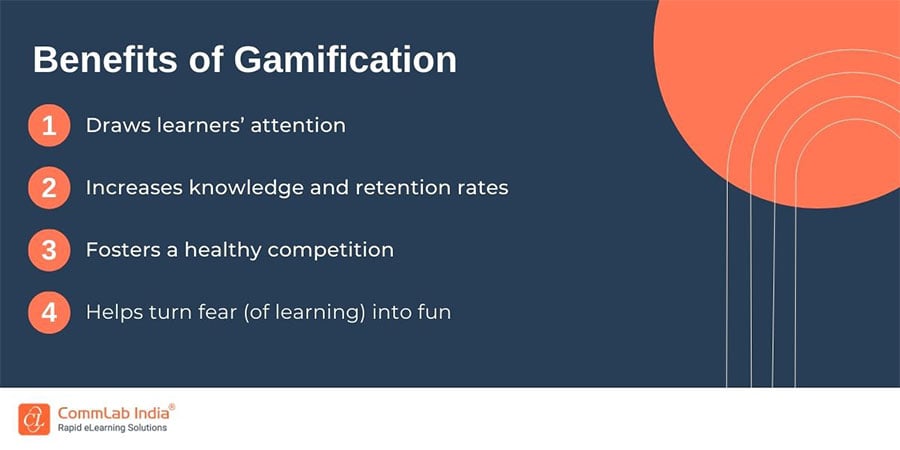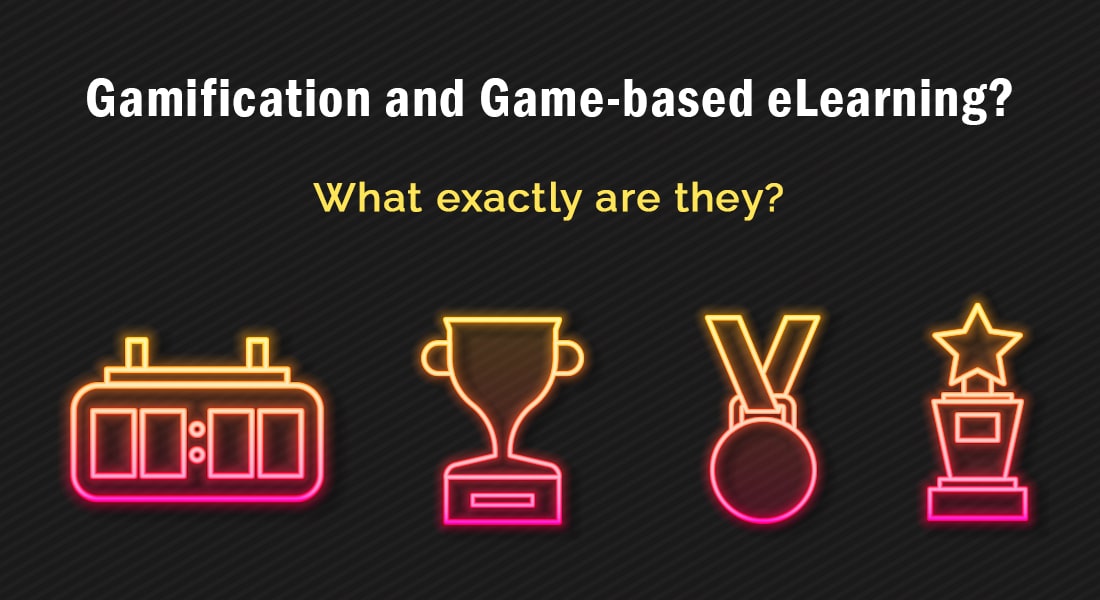Supercharge Your eLearning Program With Gamification: A Beginner’s Guide
Want to shake up your corporate training and engage your employees in a fun and interactive way? Gamification could be the answer. Come let’s delve into the topic and understand why gamifying your eLearning…

John was supposed to train his employees about a new product that the company was to launch. But after taking several such training sessions in the past, John is aware that not all employees show the same engagement and enthusiasm during such sessions…
So, to tackle it, John took a different approach, he started the training session with a quiz followed by a small simulation interactivity. The participants were awarded with points at each round. This in turn left them eager and engaged in the session.
This is exactly what gamification does to you
Why Include Gamification in Your Corporate eLearning?
Here are a few reasons why:
- Boosts learner engagement and motivation.
- Enhances knowledge retention and skill development.
- Provides interactive and practical learning experiences.
- Offers immediate feedback and rewards for progress.
What is Gamification?
Gamification is the application of game elements and mechanics to non-game contexts, such as corporate eLearning. This approach aims to increase engagement and motivation by tapping into our natural desire for achievement, reward, competition, and social interaction. Gamification can take many forms, from simple badges and leaderboards to more complex simulations and branching scenarios.
The main idea behind gamification is to make learning fun, meaningful, and relevant for the eLearners. By creating a game-like environment that challenges learners to apply their knowledge in realistic situations or solve problems collaboratively with others, gamification can help break down barriers between theory and practice. In addition to this, gamifying your eLearning offers instant feedback on performance and progress. This allows the learners to track their own development over time.
Despite the clear description, there is some confusion around gamification and game-based learning. Let us understand it in detail –
Gamification vs Game-Based Learning
Gamification and game-based learning are two concepts that often get confused with each other. Gamification refers to the use of game elements such as points, badges, and leaderboards in non-game contexts like corporate eLearning. On the other hand, game-based learning involves using games as a form of instruction where learners participate in structured activities designed to achieve specific learning outcomes.
Consider this example to understand the difference between gamification and game-based learning – Consider a sales training program. In a gamified version of this program, learners might earn points for completing modules or quizzes correctly. The leaderboard would display their progress against that of their peers. By contrast, in a game-based approach to sales training, learners might go through interactive scenarios where they practice handling objections or closing deals.
While both approaches can be effective at engaging employees and promoting better knowledge retention, it’s important to choose the right strategy based on your organization’s goals. Gamification is best suited for short-term engagement while Game-Based Learning is ideal for long-term behavioral change.
→ Access Now: Instructional Design Strategies for Sticky Learning [Webinar Recording]
Now, let us discuss the benefits of gamification
Benefits of Gamifying Your eLearning Program
There are many benefits to gamifying your eLearning program. Gamification can increase engagement, motivation, and learning outcomes. Additionally, this instructional design strategy can also reduce stress and anxiety levels, and improve critical thinking and problem-solving skills.

Gamification can help learners to see their progress and feel a sense of achievement. It can also provide immediate feedback, which can help to keep learners on track. In addition, gamification can make learning more fun and enjoyable, which can encourage learners to stick with it.
Finally, gamification can be used to measure progress and identify areas where learners may need extra help. This data can help instructors create a more tailored learning experience for their students.
Strategies to Implement Gamification in Your Corporate eLearning Program
One of the most popular approaches to gamifying corporate eLearning programs is to use game-based learning modules. These modules can be used to teach a variety of topics, from sales training to customer service. Game-based learning modules typically include a mix of training content and gameplay, and can be customized to fit the needs of your organization.

Another popular approach to gamifying corporate eLearning programs is to use leaderboards. Leaderboards can be used to track progress and encourage competition among employees. Employees can be ranked based on their performance in various eLearning activities, such as completing courses or passing quizzes.
Another strategy that can be used to gamify your corporate eLearning program is to use rewards and badges. Rewards and badges can be used to recognize employees for their accomplishments in various eLearning activities. For example, you could give employees a badge for completing a course or passing a quiz. You could also give employees rewards, such as gift cards, for reaching certain milestones in their eLearning journey.
Wrapping Up
To wrap up, gamification is an effective instructional design strategy that can skyrocket learner engagement and motivation, leading to better course completion rates and improved learning outcomes. So if you are looking for a way to take your eLearning program to the next level, gamification may be just what you need.
Want to know more such instructional design strategy for sticky learning? This webinar recording can help you take a deep dive into the subject…





